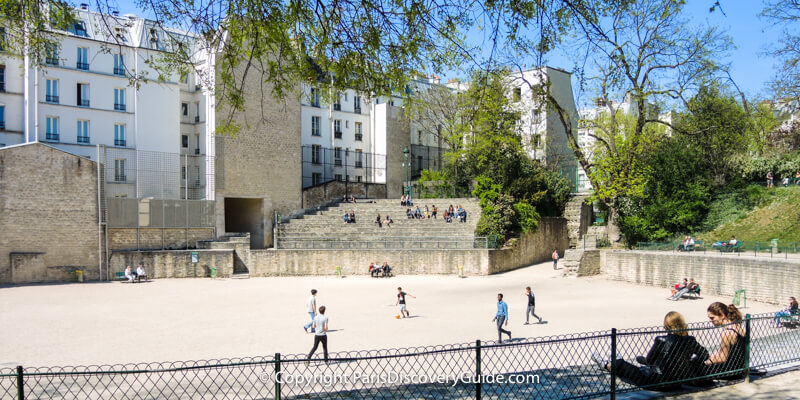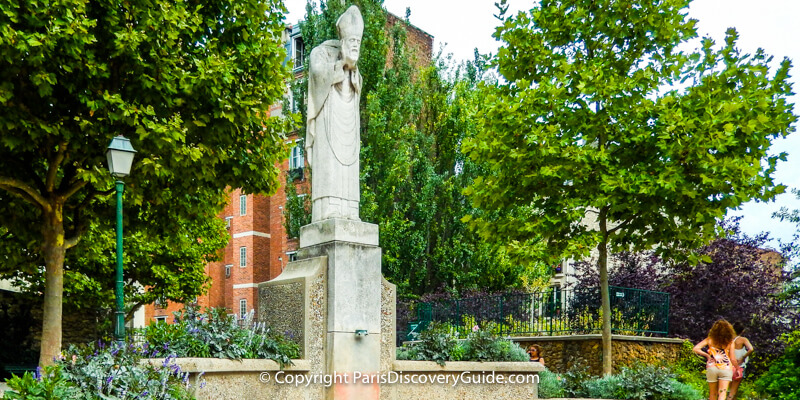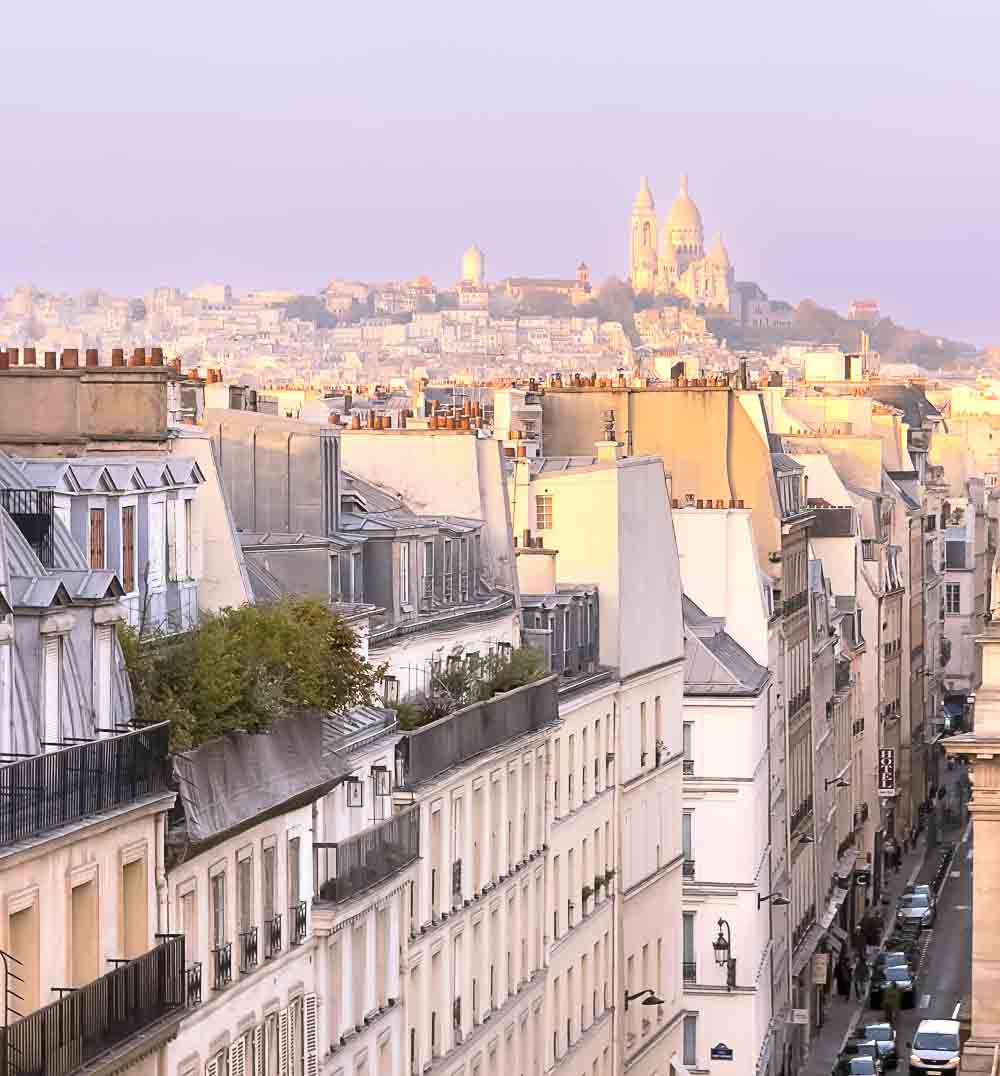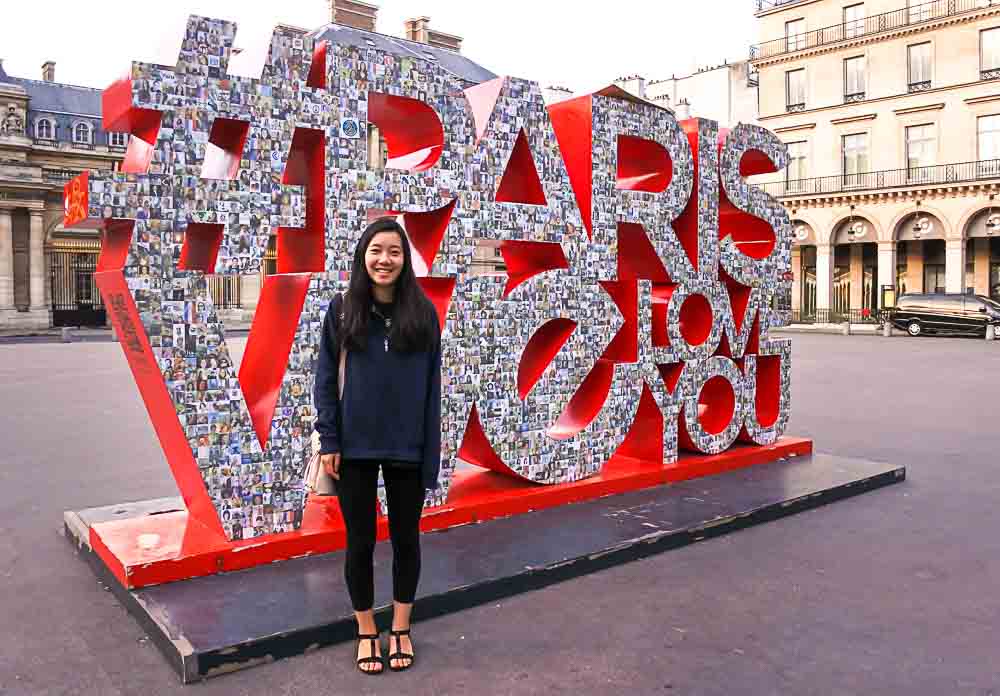When you visit Paris, you'll see evidence of the city's history all around you.
Stroll through the Marais or admire the gothic splendor of Notre Dame, and you'll get glimpes of medieval Paris.
Explore the Latin Quarter, and you may stumble across the remains of an arena where Roman occupiers once jousted.
Visit the Concergerie, and you can see vivid glimpses of the French Revolution, such as the cell where Queen Marie Antoinette spent her final days before being led to guillotine during the Reign of Terror.
The Arc de Triomphe testifies to Napoleon's victories, and the city's broad avenues and elegant mid-19th century buildings reflect his vision of what a modern Paris should look like.
But unless you studied Paris history in school - and recall all the details - fitting together all these all these layers and making sense of them is tough.
When were the Romans in Paris - and why? What centuries make up the Middle Ages? Was the Reign of Terror part of the French Revolution - or something different? And how do you keep all those kings named Louis straight? And Napolean - there were two of them???
That's where our "Paris History Cheat Sheet" comes in handy. Skim its 15 topic titles and look at the pictures to get the general concepts. Need more? Read the details.
Will they make you an expert in French history?
No, not even close.
But they will give you a timeline and context for the many historic Paris sites you're likely to see and experience during your visit.
Top photo: Notre Dame Cathedral on Île de la Cité in the Seine River
Paris History Begins: A Tribe, An Island, & Arrival of the Romans
1. Celts Arrive & Give Paris its (Ancient) Name
250-225 BCE - A Celtic tribe called the Parisii settles on a small island (now Île de la Cité) in the middle of the Seine River, and along the surrounding banks.
The Parisii are not the first people to inhabit the banks of the Seine - nomadic groups of hunter-gatherers started leaving behind ceramics and other evidence of their presence here as early as 4,500 and 4,200 BCE - but they are the first to establish ongoing communities. They sow seeds in the fertile soil, mint coins, build toll bridges, trade with others as far away as Germany and Spain, and enclose their settlement with a wall - the first of eight walls built around Paris through the centuries. The Parisii call their domain Leucotecia, apparently after the Celtic word luco, or marsh.
Want to learn more about the Parisii and the next 2,300 years of Paris history? Visit the Archaeological Crypt (Crypte Archéologique de Notre-Dame) across from Notre Dame, where you can see archaeological remains from the Parisii through the 19th century. Admission costs roughly $10 (depending on the exchange rate). Alternately, several Paris passes include free entrance to the Crypt, along with a lot of other attractions:
2. Romans Take Over Paris & Build Streets, Arenas, Baths, & More
52 BCE - In the Battle of Lutetia, a Roman army defeats the Parisii in a spot close to where the Eiffel Tower now stands, and renames the area Lutetia Parisiorum (Marsh of the Parisii), although it gradually evolves into just Lutetia (and later, Parisius). You'll still see this historic name in use - for example, Hôtel Lutetia in the 6th arrondissement, famous for sheltering refugees displaced by invading Nazi forces during World War II.
During this same period, the Romans also conquer other Celtic tribes and the swath of Western Europe where they live (roughly today's France, Luxembourg, Belgium, and Northern Italy plus parts of the Netherlands, Germany, and Switzerland) becomes known as Gaul, part of the Roman Empire.
14-25 CE - Lutetian merchants belonging to the Guild of Sailors erect the Pillar of the Boatmen, a 4-tiered limestone monuent carved with Roman and Gallic gods and Gaulish-Latin words outside a temple on Île de la Cité. After being lost for almost 1,100 years, the pillar reappeared when construction workers discovered it under Notre Dame Cathedral in 1710. You can see it today at Musée de Cluny in the 5th arrondissement.
100-200 CE - The Romans extend the city to include a slice of the Left Bank of the Seine River in today's 5th arrondissement. They establish a main street (today's Rue Saint-Jacques), and build a large forum, a huge amphitheatre, Arènes de Lutèce, and viaducts to supply water for their baths, the Thermes de Cluny.
Find out more about the Roman remains in Paris

3. Christianity & A Martyr Arrive in Paris
By mid-200 CE, a missionary from Italy brings Christianity to Paris and rather promptly becomes the martyr Saint Denis after locals cut off his head with a sword on the highest hill of Paris. The hill, called Mons Martis (Mount of Mars) by the Romans and then renamed Mons Martyrum (mountain of martyrs) after the beheading, is now known as Montmartre.
Paris history trivia question: What will most Parisians tell you about Saint Denis?
Answer: Saint Denis walked for six kilometers carrying his severed head before he died. At least, that's the legend, and it also explains the statues and pictures you'll see of him at several points around Paris.

4. Paris Prevails as the Roman Empire Collapses
200-300 CE - Parisians move back to Île de la Cité after Germanic tribes raze their Left Bank Settlements. In about 300 CE, they repurpose rocks from Arènes de Lutèce to build a wall and fortifications around the eastern half of the island. This proves useful 500 years later.
Paris History: The Middle Ages
Clovis 1, King of the Franks, defeats the Romans in 486 and becomes ruler of Gaul - significant because it means he is the first king of what turns into France.
Clovis 1 renames Parisius Paris and makes it the capital of the Franks in 511.
3rd-10th centuries - Germanic tribes (such as Saxons and Franks) and Vikings invade Gaul (and Paris) in waves. Parisians move back to Île de la Cité and repurpose rocks from Arènes de Lutèce to build a wall around the island's eastern half in about 300 CE.
During the next four centuries, war and turmoil cause trade and townlife to collapse at times but not cease entirely. Throughout this period, Parisians build churches.
Charlemagne unites much of western and central Europe and becomes Emperor of the Holy Roman , but it falls apart after his death in 814. Vikings continue to invade and Parisians build yet another wall in 885 - this time on the Right Bank near the intersection of present-day Rue de Rivoli and Rue de l'Arbre-Sec near the Louvre.
Viking invasions begin in 845 and but attempts to defeat the city fail thanks to the wall built 500 years earlier - although they do manage to burn down much of Paris and most of its churches. After their failure to capture the city, they camp outside the Louvre's city walls
One bright spot during this generally chaotic period: Fifteen-year old Carolingian King Lothair creates the first Paris "Fun Fair" in 957, now called Faire du Trône. Cool detail: the fair still exists today - much changed, of course. See March events in Paris for details.
Paris Enters the Middle Ages
5. 11th-13 century - Medieval Paris Takes Shape
Stay tuned as Paris History continues!
Walls - Philippe August
"Phillipe Auguste is actually the first to ruler to sign as King of FRANCE (Rex Franciae). Until then they signed as King of the Franks (Rex Francorum) (though it was not phased out overnight) as a lingering of a time where kings/chief ruled over a populace rather than the land they lived in per se. See the Wisigoths, Vandals, and Ostrogoths kingdoms as similar cases of germanic people ruling over former land from the crumbled Western Roman Empire." quote (random source)
Charles V
July 1830 Revolution - Overthrew Charles X; rioters burned Notre Dame and destroyed the 1756 sacristy
xxxxxxx
xxxxxxx
Want to Save on Your Paris Hotel?
Check our tips on how to find discounts, deals, and bargains for Paris hotels. Whether you're looking for cheap accommodations or want to pay less for luxury, we'll show you how to save on hotels in Paris.
Here are some shortcuts:
- Booking.com: Need last minute reservations? Check out Today Deals on their website
- Trip Advisor: Use their Best Value Deals & save BIG on your Paris hotel
- Priceline: Find the lowest prices on Paris hotels with their Express Deals
More Articles about Historic Places in Paris
- Find out about Île de la Cité's medieval masterpieces in the heart of Paris
- Paris Packing Tips - What to pack for your trip to Paris
- Paris Plages - Find out about beach fun in Paris in the summer
- Christmas in Paris - Christmas Markets and other special things to do in Paris in December

























